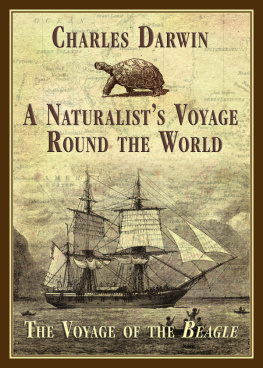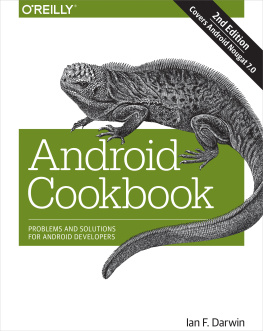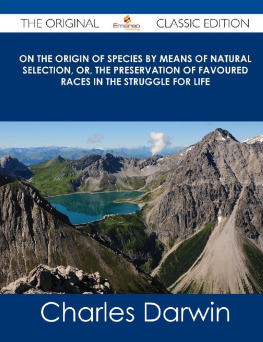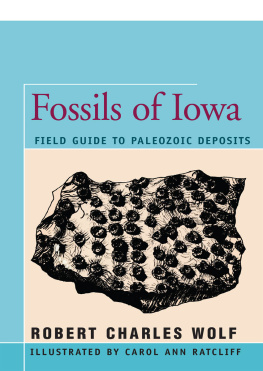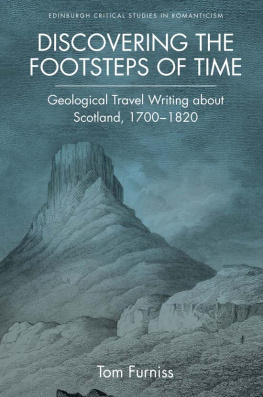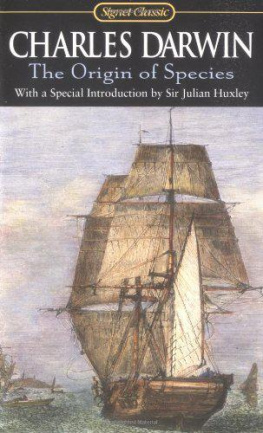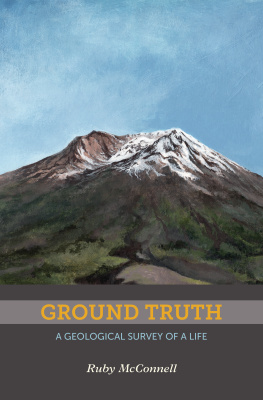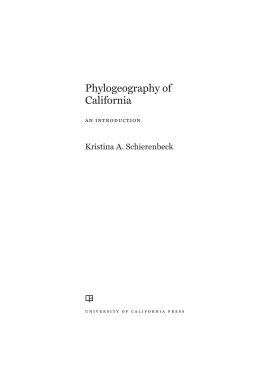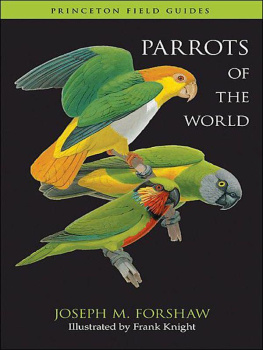Darwin - Hosts of Living Forms
Here you can read online Darwin - Hosts of Living Forms full text of the book (entire story) in english for free. Download pdf and epub, get meaning, cover and reviews about this ebook. City: London, year: 2010, publisher: Penguin Books Ltd, genre: Science. Description of the work, (preface) as well as reviews are available. Best literature library LitArk.com created for fans of good reading and offers a wide selection of genres:
Romance novel
Science fiction
Adventure
Detective
Science
History
Home and family
Prose
Art
Politics
Computer
Non-fiction
Religion
Business
Children
Humor
Choose a favorite category and find really read worthwhile books. Enjoy immersion in the world of imagination, feel the emotions of the characters or learn something new for yourself, make an fascinating discovery.
Hosts of Living Forms: summary, description and annotation
We offer to read an annotation, description, summary or preface (depends on what the author of the book "Hosts of Living Forms" wrote himself). If you haven't found the necessary information about the book — write in the comments, we will try to find it.
Hosts of Living Forms — read online for free the complete book (whole text) full work
Below is the text of the book, divided by pages. System saving the place of the last page read, allows you to conveniently read the book "Hosts of Living Forms" online for free, without having to search again every time where you left off. Put a bookmark, and you can go to the page where you finished reading at any time.
Font size:
Interval:
Bookmark:
Charles Darwin
PENGUIN BOOKS GREAT IDEAS
PENGUIN BOOKS
Published by the Penguin Group
Penguin Books Ltd, 80 Strand, London WC2R 0RL , England
Penguin Group (USA) Inc., 375 Hudson Street, New York, New York 10014, USA
Penguin Group (Canada), 90 Eglinton Avenue East, Suite 700, Toronto, Ontario, Canada M4P 2Y3
(a division of Pearson Penguin Canada Inc.)
Penguin Ireland, 25 St Stephens Green, Dublin 2, Ireland (a division of Penguin Books Ltd)
Penguin Group (Australia), 250 Camberwell Road, Camberwell, Victoria 3124, Australia (a division of Pearson Australia Group Pty Ltd)
Penguin Books India Pvt Ltd, 11 Community Centre, Panchsheel Park, New Delhi 110 017, India
Penguin Group (NZ), 67 Apollo Drive, Rosedale, North Shore 0632, New Zealand
(a division of Pearson New Zealand Ltd)
Penguin Books (South Africa) (Pty) Ltd, 24 Sturdee Avenue, Rosebank, Johannesburg 2196, South Africa
Penguin Books Ltd, Registered Offices: 80 Strand, London WC2R 0RL , England
www.penguin.com
First published in On the Origin of Species 1859
This selection published in Penguin Books 2010
All rights reserved
Except in the United States of America, this book is sold subject to the condition that it shall not, by way of trade or otherwise, be lent, re-sold, hired out, or otherwise circulated without the publishers prior consent in any form of binding or cover other than that in which it is published and without a similar condition including this condition being imposed on the subsequent purchaser
ISBN: 978-0-14-195824-8
Charles Darwin
180982
[Darwin discusses the objection to natural selection presented by the lack of intermediate forms in the fossil record]
The explanation lies, as I believe, in the extreme imperfection of the geological record.
In the first place it should always be borne in mind what sort of intermediate forms must, on my theory, have formerly existed. I have found it difficult, when looking at any two species, to avoid picturing to myself, forms directly intermediate between them. But this is a wholly false view; we should always look for forms intermediate between each species and a common but unknown progenitor; and the progenitor will generally have differed in some respects from all its modified descendants. To give a simple illustration: the fantail and pouter pigeons have both descended from the rock-pigeon; if we possessed all the intermediate varieties which have ever existed, we should have an extremely close series between both and the rock-pigeon; but we should have no varieties directly intermediate between the fantail and pouter; none, for instance, combining a tail somewhat expanded with a crop somewhat enlarged, the characteristic features of these two breeds. These two breeds, moreover, have become so much modified, that if we had no historical or indirect evidence regarding their origin, it would not have been possible to have determined from a mere comparison of their structure with that of the rock-pigeon, whether they had descended from this species or from some other allied species, such as C. oenas.
So with natural species, if we look to forms very distinct, for instance to the horse and tapir, we have no reason to suppose that links ever existed directly intermediate between them, but between each and an unknown common parent. The common parent will have had in its whole organisation much general resemblance to the tapir and to the horse; but in some points of structure may have differed considerably from both, even perhaps more than they differ from each other. Hence in all such cases, we should be unable to recognise the parent-form of any two or more species, even if we closely compared the structure of the parent with that of its modified descendants, unless at the same time we had a nearly perfect chain of the intermediate links.
It is just possible by my theory, that one of two living forms might have descended from the other; for instance, a horse from a tapir; and in this case direct intermediate links will have existed between them. But such a case would imply that one form had remained for a very long period unaltered, whilst its descendants had undergone a vast amount of change; and the principle of competition between organism and organism, between child and parent, will render this a very rare event; for in all cases the new and improved forms of life will tend to supplant the old and unimproved forms.
By the theory of natural selection all living species have been connected with the parent-species of each genus, by differences not greater than we see between the varieties of the same species at the present day; and these parent-species, now generally extinct, have in their turn been similarly connected with more ancient species; and so on backwards, always converging to the common ancestor of each great class. So that the number of intermediate and transitional links, between all living and extinct species, must have been inconceivably great. But assuredly, if this theory be true, such have lived upon this earth.
On the lapse of Time Independently of our not finding fossil remains of such infinitely numerous connecting links, it may be objected, that time will not have sufficed for so great an amount of organic change, all changes having been effected very slowly through natural selection. It is hardly possible for me even to recall to the reader, who may not be a practical geologist, the facts leading the mind feebly to comprehend the lapse of time. He who can read Sir Charles Lyells grand work on the Principles of Geology, which the future historian will recognise as having produced a revolution in natural science, yet does not admit how incomprehensibly vast have been the past periods of time, may at once close this volume. Not that it suffices to study the Principles of Geology, or to read special treatises by different observers on separate formations, and to mark how each author attempts to give an inadequate idea of the duration of each formation or even each stratum. A man must for years examine for himself great piles of superimposed strata, and watch the sea at work grinding down old rocks and making fresh sediment, before he can hope to comprehend anything of the lapse of time, the monuments of which we see around us.
It is good to wander along lines of sea-coast, when formed of moderately hard rocks, and mark the process of degradation. The tides in most cases reach the cliffs only for a short time twice a day, and the waves eat into them only when they are charged with sand or pebbles; for there is reason to believe that pure water can effect little or nothing in wearing away rock. At last the base of the cliff is undermined, huge fragments fall down, and these remaining fixed, have to be worn away, atom by atom, until reduced in size they can be rolled about by the waves, and then are more quickly ground into pebbles, sand, or mud. But how often do we see along the bases of retreating cliffs rounded boulders, all thickly clothed by marine productions, showing how little they are abraded and how seldom they are rolled about! Moreover, if we follow for a few miles any line of rocky cliff, which is undergoing degradation, we find that it is only here and there, along a short length or round a promontory, that the cliffs are at the present time suffering. The appearance of the surface and the vegetation show that elsewhere years have elapsed since the waters washed their base.
He who most closely studies the action of the sea on our shores, will, I believe, be most deeply impressed with the slowness with which rocky coasts are worn away. The observations on this head by Hugh Miller, and by that excellent observer Mr Smith of Jordan Hill, are most impressive. With the mind thus impressed, let any one examine beds of conglomerate many thousand feet in thickness, which, though probably formed at a quicker rate than many other deposits, yet, from being formed of worn and rounded pebbles, each of which bears the stamp of time, are good to show how slowly the mass has been accumulated. Let him remember Lyells profound remark, that the thickness and extent of sedimentary formations are the result and measure of the degradation which the earths crust has elsewhere suffered. And what an amount of degradation is implied by the sedimentary deposits of many countries! Professor Ramsay has given me the maximum thickness, in most cases from actual measurement, in a few cases from estimate, of each formation in different parts of Great Britain; and this is the result:
Next pageFont size:
Interval:
Bookmark:
Similar books «Hosts of Living Forms»
Look at similar books to Hosts of Living Forms. We have selected literature similar in name and meaning in the hope of providing readers with more options to find new, interesting, not yet read works.
Discussion, reviews of the book Hosts of Living Forms and just readers' own opinions. Leave your comments, write what you think about the work, its meaning or the main characters. Specify what exactly you liked and what you didn't like, and why you think so.




